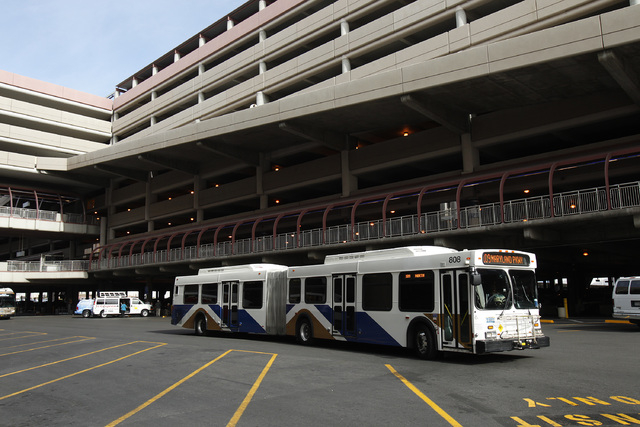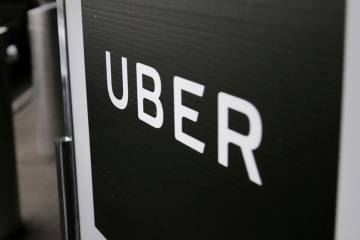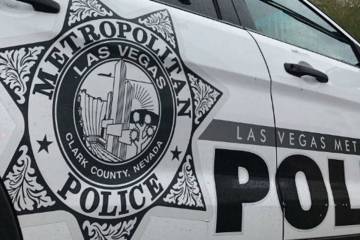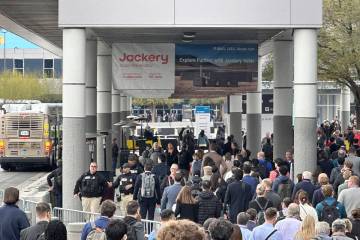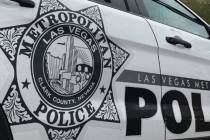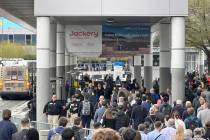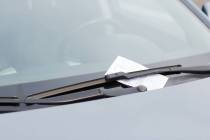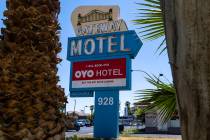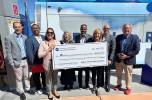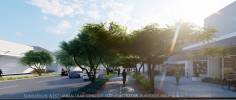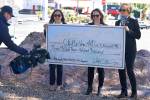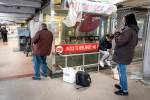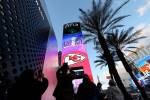Maryland Parkway light rail preview shows trains on outside of roadway
Business leaders got their first look at a proposed 8.7-mile urban light-rail route along Maryland Parkway that has a big change from earlier renditions — trains would run along the outside lanes instead of in the center of the street.
Representatives of the Regional Transportation Commission of Southern Nevada and the Parsons engineering firm unveiled the $460 million proposal that would someday transport passengers from Terminal 1 of McCarran International Airport, past the University of Nevada, Las Vegas, the Boulevard Mall and Sunrise Hospital and Medical Center into downtown Las Vegas, then west to the future home of UNLV’s medical school in a medical corridor at Shadow Lane.
Maryland Parkway business leaders got an early look at the proposal Wednesday in advance of public meetings scheduled March 15 and 16.
The plan calls for 25 stations along the length of the route with an average distance of one-third of a mile between stops.
David Swallow, director of Regional Transportation Commission engineering services, said the decision to move the rail lines to the side of the street is a cost-saving measure because less right-of-way would have to be acquired to build the line. Nearly the entire route would be at grade, meaning rail vehicles would be a part of vehicular traffic on the street. The street profile would include widened sidewalks on the extreme right side, the rail line, a 5-foot bicycle lane, two lanes for vehicle traffic, then a landscaped center median.
The proposed technology is known as urban light rail — termed by the industry as a “streetcar” — which operates slower than regional light-rail trains similar to those in Phoenix, Salt Lake City and Denver. Most streetcar systems have one or two train cars per vehicle.
The system is different from a proposed Strip light-rail system, but the lines would likely connect at a multimodal transit station near the airport.
Project Manager Phil Hoffman of Parsons told the 25 people who gathered for the meeting that engineers compared urban light rail with standard bus service and bus rapid transit, the modern-looking buses the Regional Transportation Commission uses on some routes.
Hoffman said studies indicate urban light rail would be ridden more than bus rapid transit or conventional buses because of the “cache” a train brings to the system.
The capital cost of bus rapid transit was estimated at $225 million for the Maryland Parkway route with operation and maintenance costs of $7.7 million a year for bus rapid transit compared with $9.8 million for urban light rail.
The operation and maintenance per boarding would average $1.93 for bus rapid transit compared with $2.03 for urban light rail. Conventional bus operation would cost up to $2.27 per boarding because of the expected smaller passenger volume.
Engineers believe there’s potential for economic development around transit stops with rail that wouldn’t occur around bus stops.
Commission officials are investigating potential federal grant dollars it could pursue to build the system, but Swallow said that under any circumstance, the local share to build would be at least 20 percent of the total cost. The agency also would be competing with other communities nationwide for federal dollars.
Local funding sources could include farebox and sales-tax revenue, property-tax revenue supporting general obligation bonds, development fees, tax increment financing and investment from public-private partnerships.
Once the public weighs in the proposal — meetings are at 11 a.m. March 15 at the UNLV Student Union; 4 p.m. March 15 at the Boulevard Mall; and 11:30 a.m. March 16 at the Bonneville Transit Center — engineers would proceed with their environmental assessment.
The system would be designed in 2018-19, construction would occur from 2020-22 with the first service available in 2023.
Contact Richard N. Velotta at rvelotta@reviewjournal.com or 702-477-3893. Find him on Twitter: @RickVelotta



